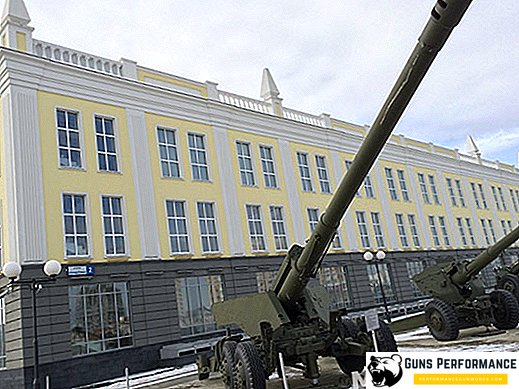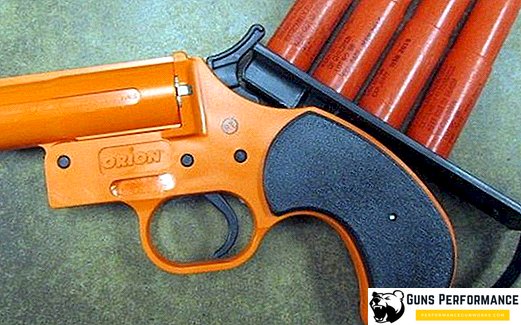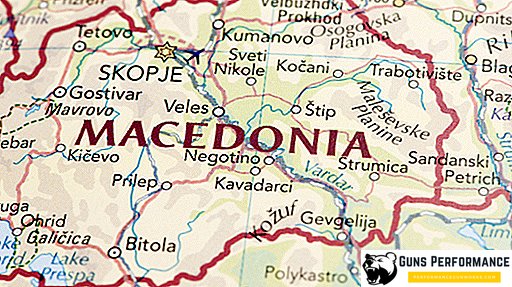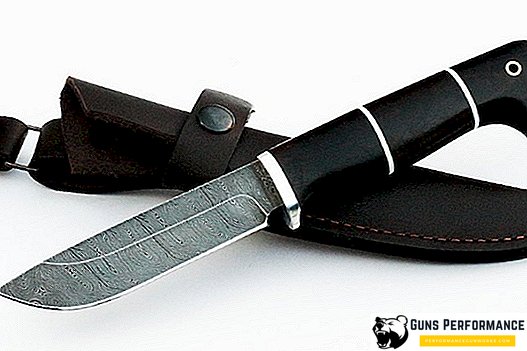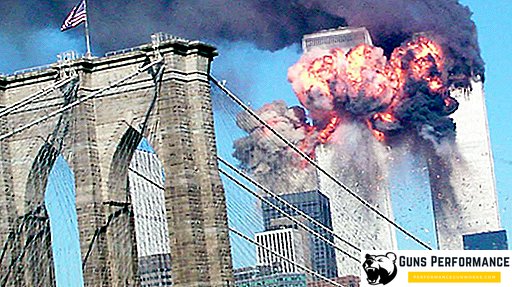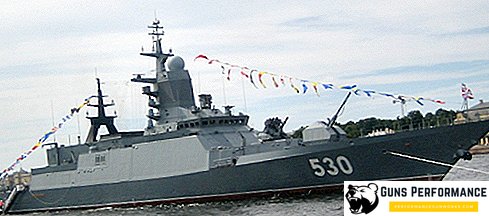The second half of the 20th century was the “high point” for the development of helicopters. These machines were almost never used during the Second World War, but already in the Korean War, helicopters were used most actively. The pioneers in the use of a helicopter on the battlefield were the Americans. The development of helicopter in the United States is associated with the name of Igor Sikorsky - a talented engineer, a native of Kiev, who left for the United States after the October Revolution.
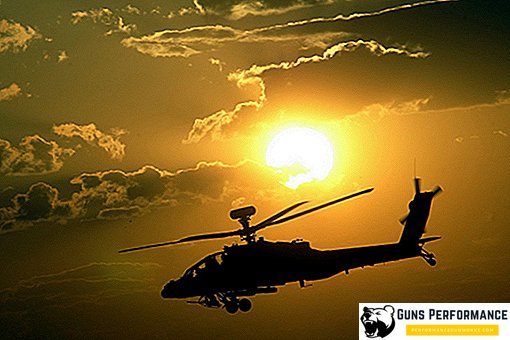
Although, it should be noted that at first these machines had a large number of opponents. The US Air Force did not want to buy helicopters at all, citing the low flight characteristics, difficulty in servicing and possible vulnerability to air defense weapons. Alas, the military very often suffer from inertia of thinking. But this attitude very quickly changed to the opposite. Helicopters perfectly proved themselves in the Korean War. They were used to adjust the fire, reconnaissance, evacuation of the wounded, the landing of troops and other purposes. After a few months of fighting, American generals demanded to give them "more turntables."
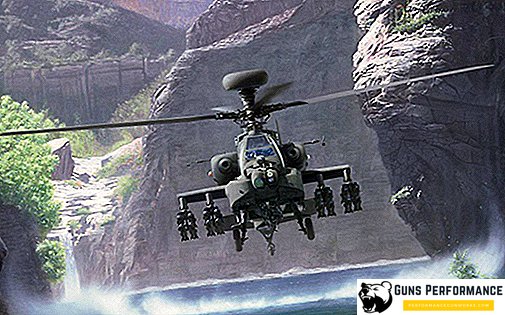
Before the advent of helicopters, fighters who received moderate or severe injuries were almost doomed (90% died). After the beginning of the "helicopter" era, the mortality rate dropped to 10%. By the end of the Korean conflict, small light machine guns began to be installed on helicopters. The US Army has already been armed with several types of helicopters.
The Korean War showed that the helicopter is an excellent means for solving tactical tasks, primarily related to the transfer of troops and their supplies. In the second half of the XX, many local conflicts and colonial wars occurred, in which one of the parties was forced to wage an anti-partisan struggle. And it turned out that a helicopter is the ideal vehicle for this kind of fighting.
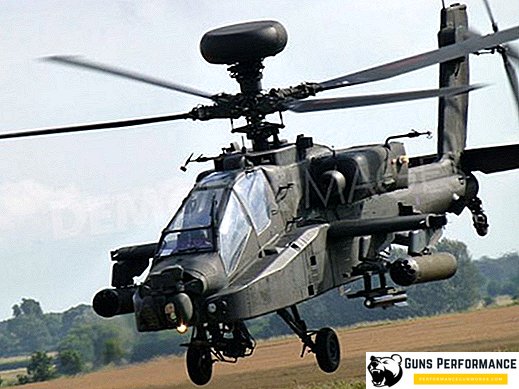
The helicopter is increasingly becoming not just a vehicle, but also a striking machine, an ideal attack aircraft and a means of supporting ground forces. Uncontrollable rockets and machine guns began to be installed on helicopters, and with the advent of anti-tank guided missiles, the helicopter became a powerful means of fighting armored vehicles.
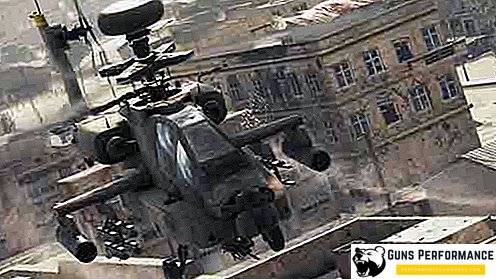
An important milestone in the development of military helicopters was the Vietnam War. A real symbol of this war was the American Bell UH-1 helicopter, better known as Huey. This is a beautiful, reliable and unpretentious car produced until now. Another helicopter that was actively used in the Vietnamese jungle was the attack helicopter Bell AH-1 Cobra. His main task was to support the troops and attack the enemy.
By the end of the fighting in the US Army, special divisions were formed, armed with only helicopters. The Vietnam War gave a sharp impetus to the development of helicopter in the United States.
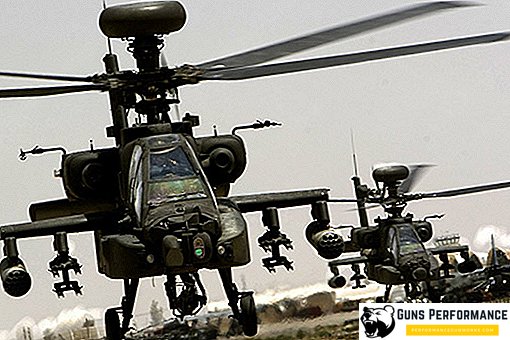
In the late 70s of the last century in the United States began to think about creating a new attack helicopter, he had to absorb all the experience gained in Vietnam and replace the Bell AH-1 Cobra machines. The competition for the development of a new helicopter was attended by several of the largest US aircraft manufacturing companies. In 1976, the victory went to the company Hughes, and in 1981 the AN 64 Apache helicopter appeared, which is still in service with the US Army and is considered one of the best helicopter gunships in the world. Since 1984, the AN 64 is commercially available.
Description of a combat helicopter AH 64 Apache
This machine was originally created as a helicopter attack, to support the ground forces at any time of day and in any weather. Also, one of the main functions of the Apache is the fight against enemy armored vehicles, which they have repeatedly brilliantly demonstrated during various conflicts.
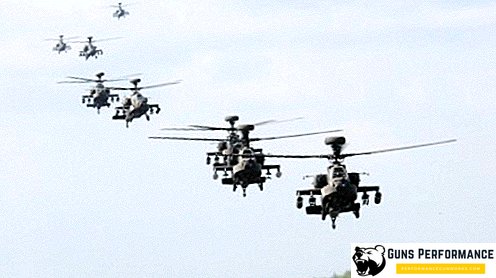
Requirements for the new helicopter initially put forward very strict. AN 64 was supposed to fly in the rain and at night, to perform a combat mission, even after hitting a 12.7 mm caliber bullet, to be able to fly “instrumentally” and attack in poor visibility conditions, and also to ensure the safety of the crew during an emergency landing at a speed of 12 , 8 m / s.
The helicopter has several modifications. The latest and most advanced of them - AN 64D Apache Longbow, the first such car took off in early 1991.

"Apache" is made according to the classical scheme with one steering and one rotor. Both rotors and tail rotors have four blades. The length of the main rotor blade of the Apache helicopter is 6 meters, the blades have a special structure: inside they are metal, covered with fiberglass on top, the rear edge is made of composite material, and the front one is titanium. Such a structure allows the helicopter to hit the small obstacles with blades (branches, small trees). The steering screw is X-shaped, which is much more efficient than the traditional one.
The fuselage of the AN 64 Apache consists of aluminum alloys of special strength; the helicopter has a wing of small elongation (removable) and a non-retractable landing gear. The cabin of the AN 64 is designed for two crew members who sit one above the other. The cockpit is protected by heavy armor. The design of the helicopter can withstand heavy loads. "Apache" has two engines that are spaced on the sides of the machine. Each of the engines has a special device, it disperses the exhaust jet and reduces the visibility of the helicopter in the infrared range.
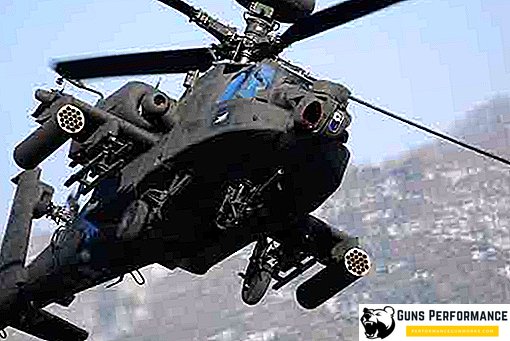
The combat helicopter uses a double hydraulic system, fuel tanks are protected, the most important parts of the vehicle are covered with armor.
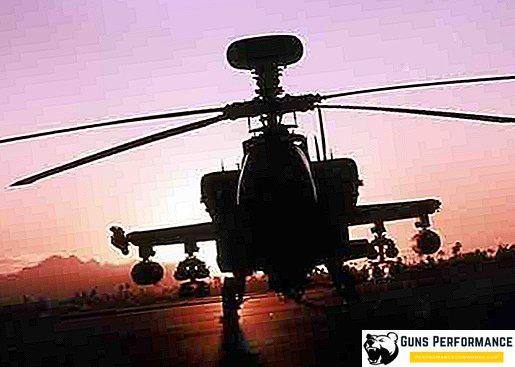
On AN 64 there are a lot of various electronic equipment installed, especially this can be said about the last modification - AN 64D Apache Longbow. The basis of all weapons AN 64 is TADS - target designation and detection system. It consists of several elements.
- Night vision system with multiple magnification;
- Optical system;
- TV system that operates during the day;
- In addition, on the Apache helicopters, for the first time, a helmet-mounted target designation system was used, which allows you to shoot with your head in motion. Electronic control systems allow the pilot to conveniently fly a helicopter and fight. Particularly well thought out management Apache for flights at ultra-low altitudes, with rounding elements of the landscape. This greatly increases the chance of survival for the vehicle and its crew.
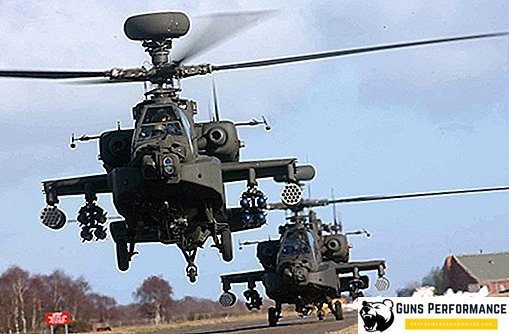
The Apache has four suspension points on the wings and unguided or guided missiles can be placed on them. Up to 700 kg can be attached to each suspension. On the helicopter you can install 16 guided missiles "Helfire". Between the landing gear mounted gun Hughes H230A-1 "Chaingun", having a caliber of 30 mm.
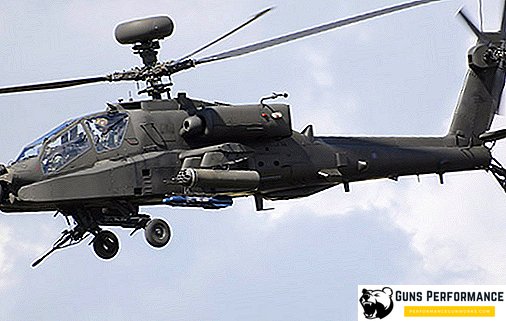
Below are the technical characteristics of all modifications of the combat helicopter AN-64 Apache.
Technical characteristics of the performance characteristics of the helicopter AH-64 "Apache"
| Model | AH-64A | AH-64C | AH-64D Longbow |
| Specifications | |||
| Crew | 2 | ||
| Length m | 17,76 | ||
| Diameter of main rotor, m | 14,63 | ||
| Diameter of tail rotor, m | 2,79 | ||
| Normal take-off weight, kg | 6 650 | 6 552 | 7 530 |
| Maximum takeoff weight, kg | 8 000 | 9 525 | 10 432 |
| Engine | T700-GE-701 | T700-GE-701C | |
| Power, hp | 2 × 1 695 (1 270) | 2 × 1 890 (1 409) | |
| Flight performance | |||
| Maximum allowable speed, km / h | 365 | ||
| Maximum speed, km / h | 300 | 293 | 265 |
| Practical range, km | 690 | 482 | 407 |
| Practical ceiling, m | 6 100 | 6 400 | 5 915 |
| Maximum rate of climb, m / s | 12,27 | ||
| Vertical rate of climb, m / s | 12,7 | 7,5 | |
| Maximum operating overload | + 3.5 / −1.0 g | + 3.5 / −0.5 g | |
| Armament | |||
| Automatic gun | 30 mm (625 shots / min) | ||
| Ammunition | up to 1 200 patr. | ||
| Guided missiles | 4 × 4 | ||
| NAR | 4 × 19 × 70 mm Нydra | ||
Modifications AH-64 "Apache"
There are several modifications of this helicopter.
- AH-64A Apache - This is the very first serial modification, it can be said, the basic model of the machine.
- AN-64C - This is an upgraded basic helicopter. Modernization began in 1992, in 1993 this program was closed. It does not have a Longbow radar.
- AH-64D "Apache longbow" - The most perfect modification of the helicopter. It is easy to recognize visually: a mushroom-shaped Longbow radar of the millimeter-wave range is installed above the plane of rotation of the rotor. The helicopter is also equipped with a more powerful T700-GE-701 C engine. Hellfire missiles (shot and forgotten) are installed on the helicopter.
- AH-64 Sea Going Apache - modification of the helicopter for the Navy and Marines, with anti-ship missiles.
- WAH-64D - modification for the army of Great Britain, was issued under license. It is equipped with engines manufactured by Rolls Royce.
The Apache combat helicopter took part in many conflicts and always showed its best. This machine is considered one of the most advanced combat helicopters of the second generation. His debut took place in 1989, in Panama. Then there was the war in Iraq, Yugoslavia, the second invasion of Iraq and Afghanistan.
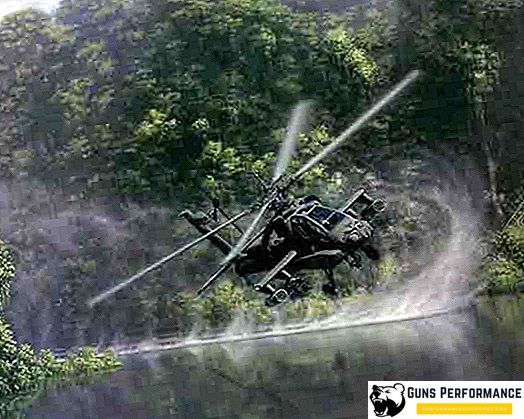
Currently, this helicopter is in service in more than fifteen countries. Negotiations are underway to sell the car to several other customers. Most likely, the proven AH-64D will remain the main attack helicopter of the US Army in the next ten years.


